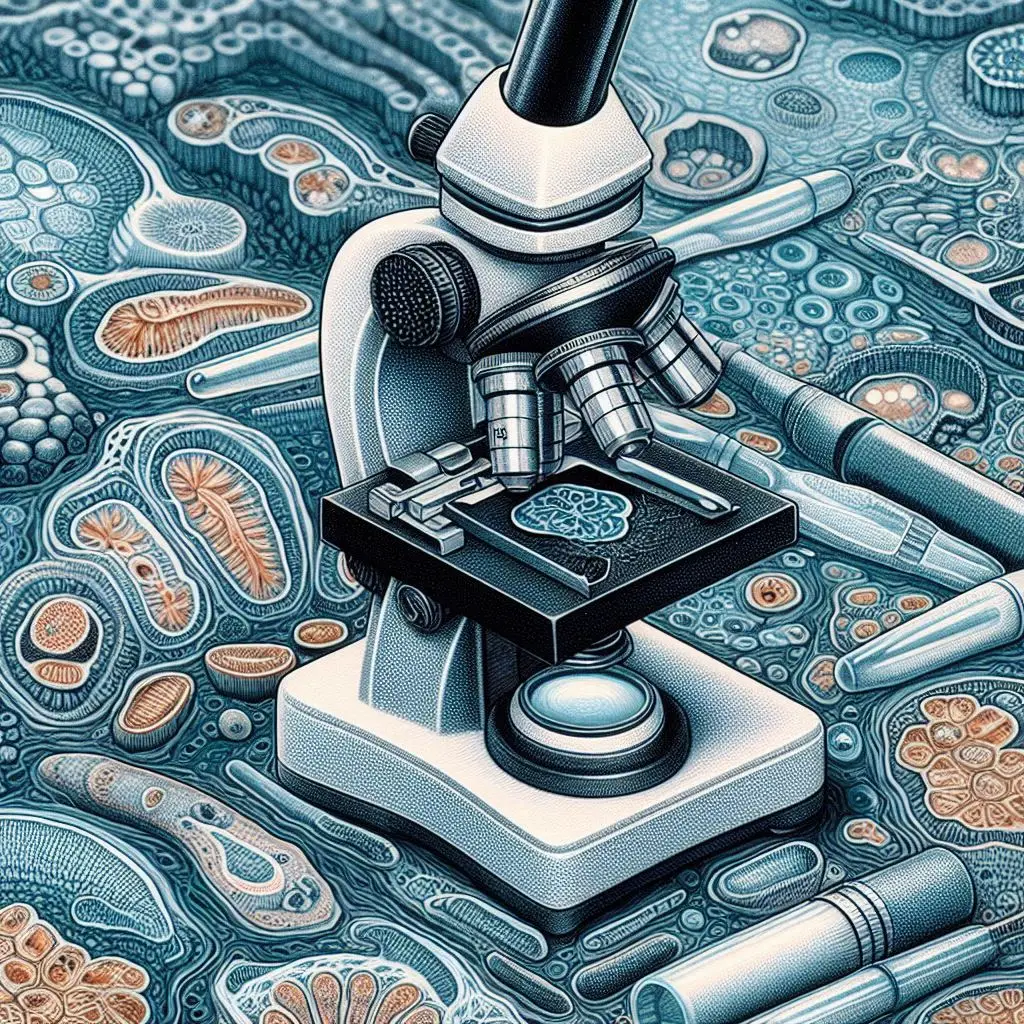H&E Staining Process

What is H&E Staining?
H&E staining is a technique used to differentiate between various cellular components in tissue samples. Hematoxylin stains cell nuclei blue, while eosin stains cytoplasm and extracellular matrix pink. This contrast helps pathologists identify abnormalities in tissues. For more detailed information on tissue staining techniques, you can visit Nature Reviews.
Importance of H&E Staining
The H&E staining process serves several critical functions:
- Diagnostic Tool: It aids in diagnosing diseases such as cancer by highlighting abnormal cell structures.
- Research Applications: Researchers use H&E staining to study tissue morphology and pathology.
- Educational Purposes: It is commonly used in teaching histology to help students understand tissue architecture.
For further insights into the significance of histological techniques, check out ScienceDirect.
Key Steps in the H&E Staining Process
The H&E staining process involves several key steps that ensure accurate results. Below are the main stages of this technique.
Preparation Steps
Fixation
Fixation is the first step in the H&E staining process. It preserves tissue structure by using fixatives like formalin. Proper fixation prevents decay and maintains cellular integrity. For more on fixation methods, refer to Histopathology.
Dehydration
After fixation, tissues undergo dehydration. This step removes water from the samples through a series of graded alcohol solutions (e.g., 70%, 80%, 95%, and 100% ethanol). Dehydration is crucial because it prepares tissues for embedding.
Clearing
Once dehydrated, tissues need to be cleared. Clearing agents like xylene remove alcohol from samples. This step prepares tissues for embedding in paraffin wax.
Embedding
Embedding involves infiltrating tissues with paraffin wax. Paraffin provides support for thin sectioning. The wax solidifies around the tissue, allowing for precise cuts.
Sectioning
Using a microtome, thin slices of paraffin-embedded tissue are cut and mounted onto glass slides. The thickness of sections typically ranges from 4 to 6 micrometers.
Staining Steps
Now that we have prepared our samples, we can proceed to the staining steps.
Deparaffinization
Deparaffinization removes paraffin wax from tissue sections using xylene or another clearing agent. This step is essential for allowing stains to penetrate the tissue effectively.
Rehydration
After deparaffinization, sections must be rehydrated through graded alcohol solutions back to water. This process helps restore the tissue’s natural state before staining.
Hematoxylin Staining
The first stain applied is hematoxylin. It selectively stains cell nuclei blue or purple. The sections are then rinsed in a weak acid solution to remove excess stain. A bluing step follows, where sections are treated with mildly alkaline water to stabilize the color.
For more information on hematoxylin staining techniques, visit PubMed Central.
Eosin Staining
Following hematoxylin staining, eosin is applied as a counterstain. Eosin colors cytoplasm and extracellular matrix pink, providing contrast against blue-stained nuclei.
Washing
After each staining step, wash the slides with water to remove any excess dye. This ensures clarity in microscopic examination.
Dehydration Post-Staining
Once stained, sections undergo dehydration again through graded alcohols (70%, 80%, 95%, and 100%). This step prepares them for mounting.
Mounting
Finally, apply a mounting medium and place a coverslip over each section. This protects the sample and allows for clear viewing under a microscope.
Best Practices for H&E Staining
To achieve optimal results with H&E staining, consider these best practices:
- Use Quality Reagents: Always use high-quality hematoxylin and eosin stains for consistent results.
- Maintain Consistent Timing: Adhere to recommended timing for each step to prevent over-staining or under-staining.
- Ensure Proper Fixation: Effective fixation is crucial for preserving tissue morphology.
- Optimize Section Thickness: Aim for consistent section thickness (4-6 micrometers) for uniform staining.
- Follow Safety Protocols: Use appropriate personal protective equipment (PPE) when handling chemicals like xylene and alcohol.
For additional resources on best practices in histological techniques, visit American Journal of Clinical Pathology.
Troubleshooting Common Issues in H&E Staining
Despite careful preparation and execution, issues may arise during H&E staining. Here are some common problems and their solutions:
Problem: Over-Stained Sections
If sections appear too dark or saturated:
- Solution: Reduce hematoxylin exposure time or increase washing time after hematoxylin application.
Problem: Poor Nuclear Visualization
If nuclei are faint or not visible:
- Solution: Ensure proper fixation and adequate differentiation after hematoxylin staining.
Problem: Uneven Staining
If sections show uneven color distribution:
- Solution: Check for consistent section thickness and ensure even application of stains.
Problem: Background Staining
If there is excessive background color:
- Solution: Increase washing time after eosin application or reduce eosin exposure time.
For more troubleshooting tips related to histological techniques, refer to Journal of Histotechnology.
Conclusion
The H&E staining process is an essential tool in histology that allows for detailed visualization of tissue architecture. By following each step carefully—from fixation to mounting—scientists can achieve reliable results that aid in diagnosis and research. Understanding this process not only enhances skills in histological techniques but also contributes significantly to advancements in medical science.
For further reading on histological techniques and their applications, consider exploring resources from The American Society for Clinical Pathology or Histopathology Journal.
For more pearls of Vets Wisdom:
Current Status Of Egg Production in India





Responses